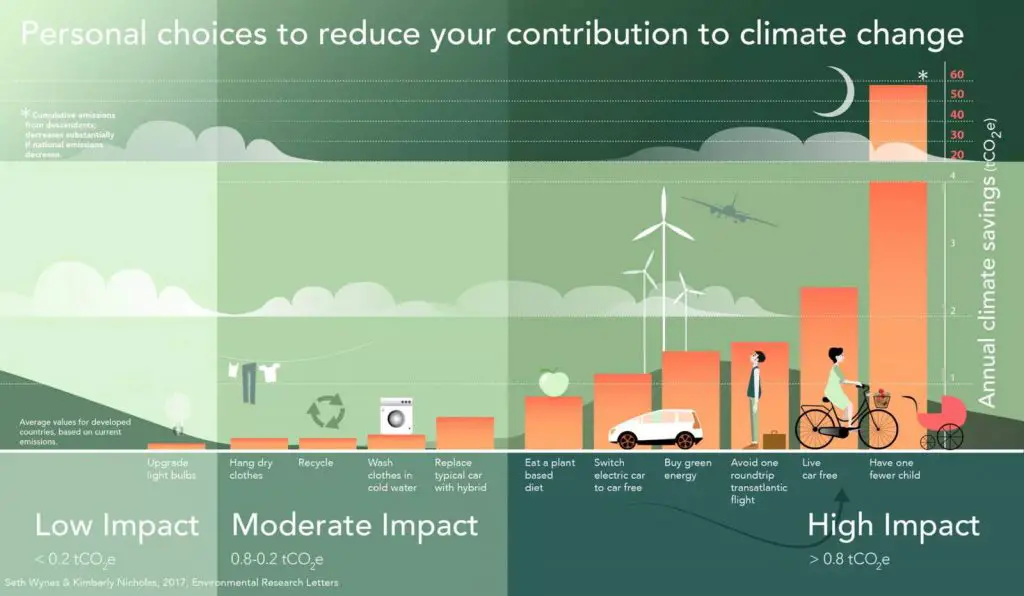In the wake of continued climate change and the lingering effects of the global pandemic, sustainability has become much more than just a catchy buzzword. In increasing frequency, people are becoming more mindful of how their actions and behaviors can harm the environment. According to a recent Forbes poll, 32% of U.S. consumers actively seek out companies that are working to reduce their environmental impact.
On a company level, sustainability initiatives may involve waste reduction, improved water stewardship, and/or energy efficiency. Many business leaders claim that sustainability helps ensure long-time value and company longevity. But the positive side effects of a sustainable business model encompass much more than increasing profit margins.
Business-based sustainability can positively impact the local community as well. A recent California Institute for Local Government study found that localized sustainability often results in increased housing options, more efficient transportation, and reduced emissions. On several levels, it just makes sense for businesses to work alongside their local communities to improve sustainability on a large scale.
Here’s what you need to know about building a sustainable business model and strengthening communities while also helping to counter the lasting effects of climate change.
Human Activities and the Climate: What’s at Stake?
Our technologically advanced society has improved daily life in myriad ways, and global citizens are more connected than ever. But those advancements have come with a heavy cost, from both an environmental and social standpoint. Human activity over the years has led to climate change, soil erosion, poor air quality, and depleted freshwater supplies.
As human activity has caused so much damage, it is within the same arena that we must look for solutions. The choices we make in our daily life, as well as our careers, can help alter the current trajectory, and implementing sustainable business practices is a great place to start.
Some businesses are even moving closer to complete independence from the outside world. The concept is known as “self-sustainability,” and its ultimate goal is long-term self-sufficiency, where all your needs are independently met. Complete self-sustainability involves producing your own food and energy, becoming financially responsible, and taking charge of your mental and physical health.
Self-sustainability may be out of reach for many individuals and businesses at this time, but even small lifestyle changes, such as living minimally and making mindful purchasing decisions, can reap myriad rewards over the long term.
Implementing a Sustainable Business Model
On a business level, authenticity is a key component of consumer attraction and retention. Your company’s mission must come from a place of compassion and true environmental stewardship. Moreover, sustainability efforts must encompass every aspect of your business, down to the supply chain and logistical considerations.
To build stronger communities as you work towards improved sustainability, look to local sources for your products and supplies. Keeping it local results in a significantly smaller supply chain, and boosts the economy as more money stays in the local community. Further, when local businesses buy from their fellow area shop owners, the entire community can breathe a little easier.
In Bellingham, Washington, for example, sustainability initiatives and buying local resulted in a 26% decrease in miles driven by consumers and suppliers alike. In turn, neighborhoods with local businesses like Bellingham typically have less sprawl, pollution, and congestion than areas where national chains and large corporations are more common.

Sustainability Initiatives for the Greater Good
It’s important to note that a sustainable business model can look very different, depending on your industry and physical shop location. Community-based sustainability should consider localized issues, from social problems like poverty, homelessness, and unemployment, to environmental concerns and beyond. No matter your role as a business leader, take a look at the most prevalent issues in your area and incorporate solutions into your sustainability initiatives.
You may discover that your business is located within a food desert, for instance, and want to help improve healthy food access within your local community. Consider donating resources, and don’t be afraid to look outside the box for solutions. In food deserts and low-income communities around the world, innovative ideas such as urban and vertical farming are helping bring nutritious, affordable food to those who need it most.
Vertical farming is an ideal solution to food insecurity in areas with a large population density, and the technology spans multiple disciplines. But it’s just one of many potential innovations you can incorporate into a sustainable business plan. Whatever product or service your company provides, you likely have something to contribute towards curbing food insecurity, reducing pollution, and strengthening your local community.
Key Takeaways
As humanity faces an uncertain future, businesses of all sizes are jumping on the sustainability bandwagon, to stand out from the competition. To make the greatest impact in terms of both social and environmental justice, company leaders should consider the needs of the local community, and work towards creating a better future and a healthier planet.
- Miracle Drug or Snake Oil? How Consumers Can Tell the Difference - August 15, 2022
- Why Renewable Energy is a Geopolitical Issue - March 16, 2022
- Sustainable Trends in Manufacturing and Construction - January 28, 2022

